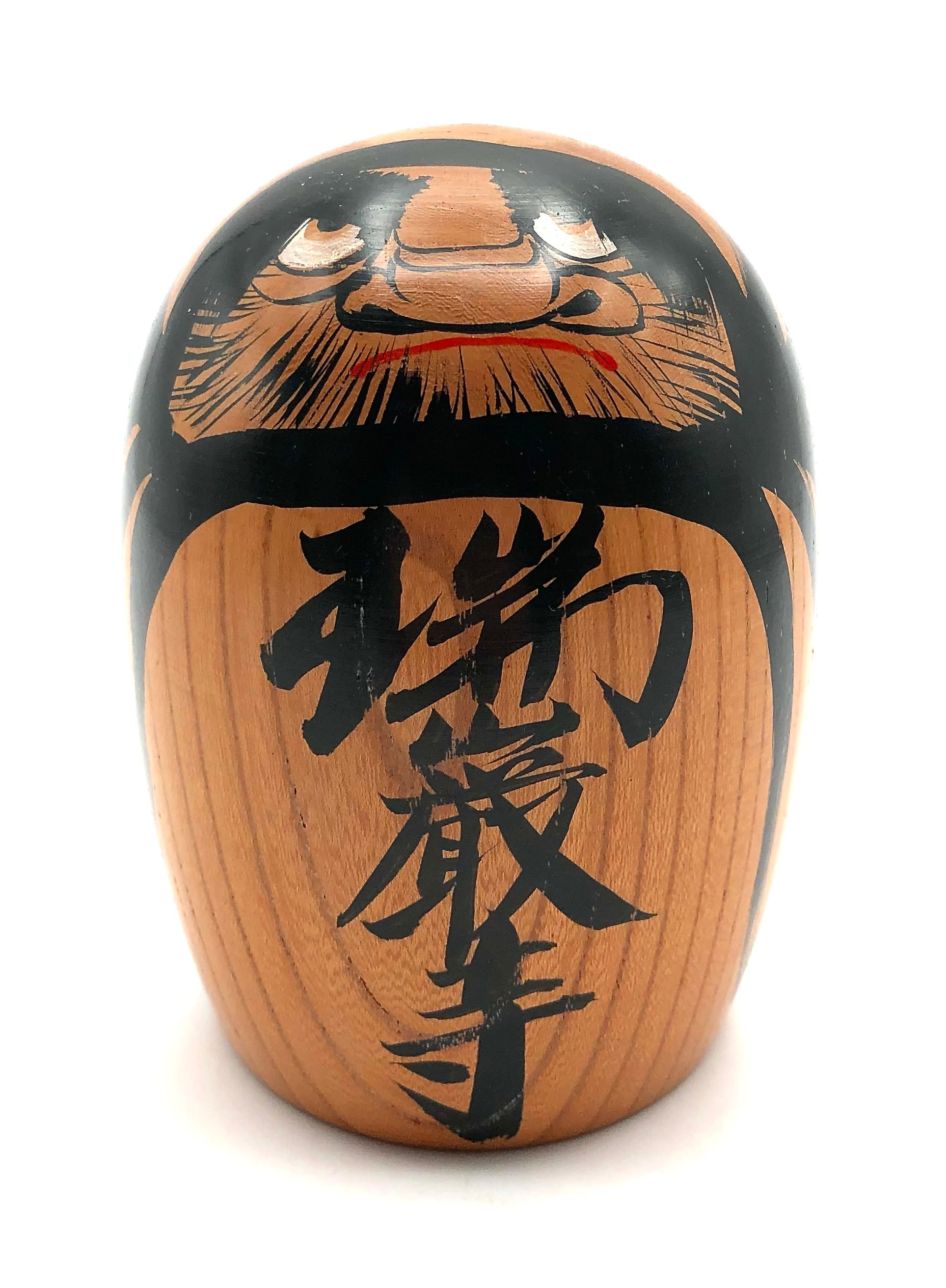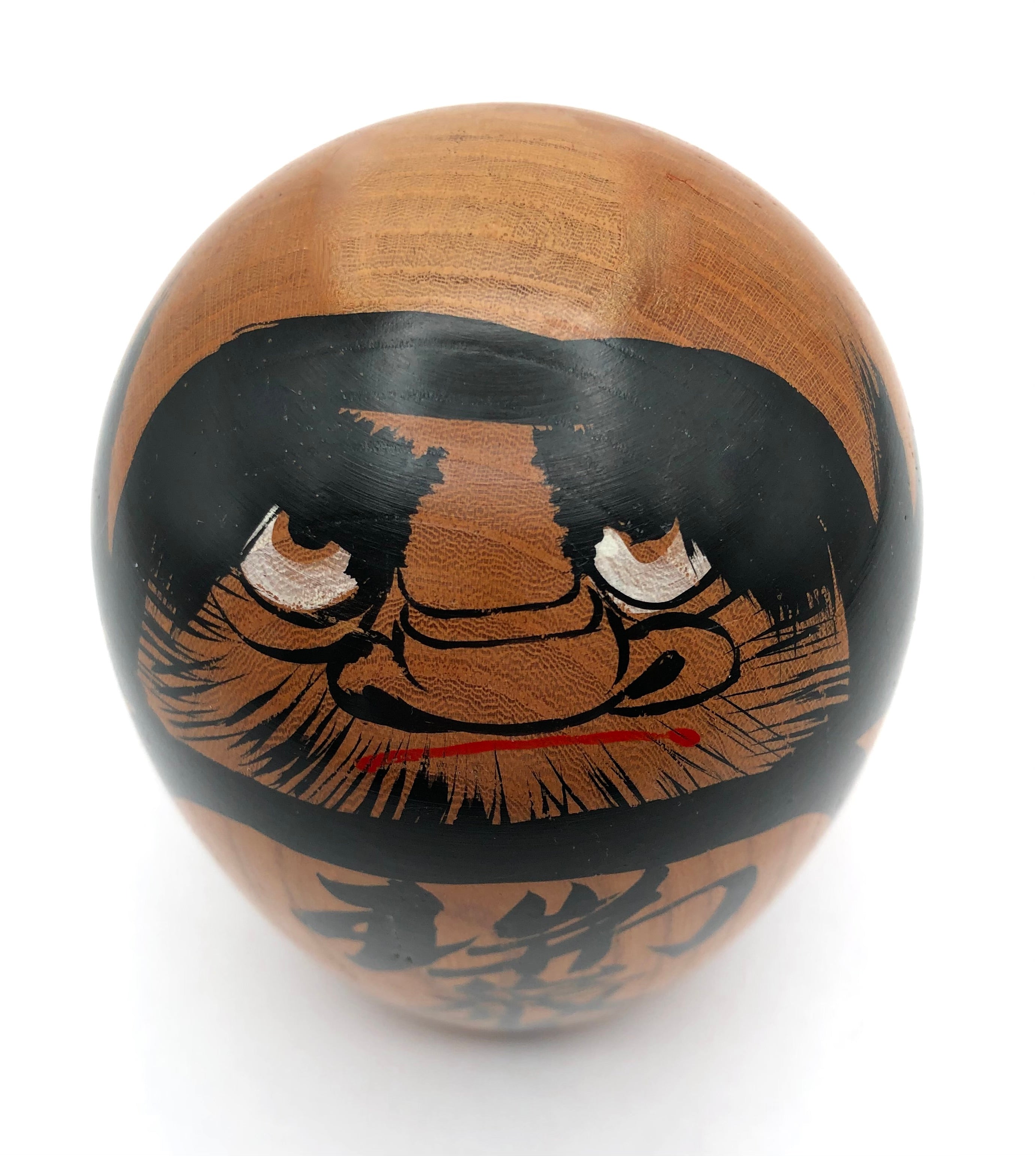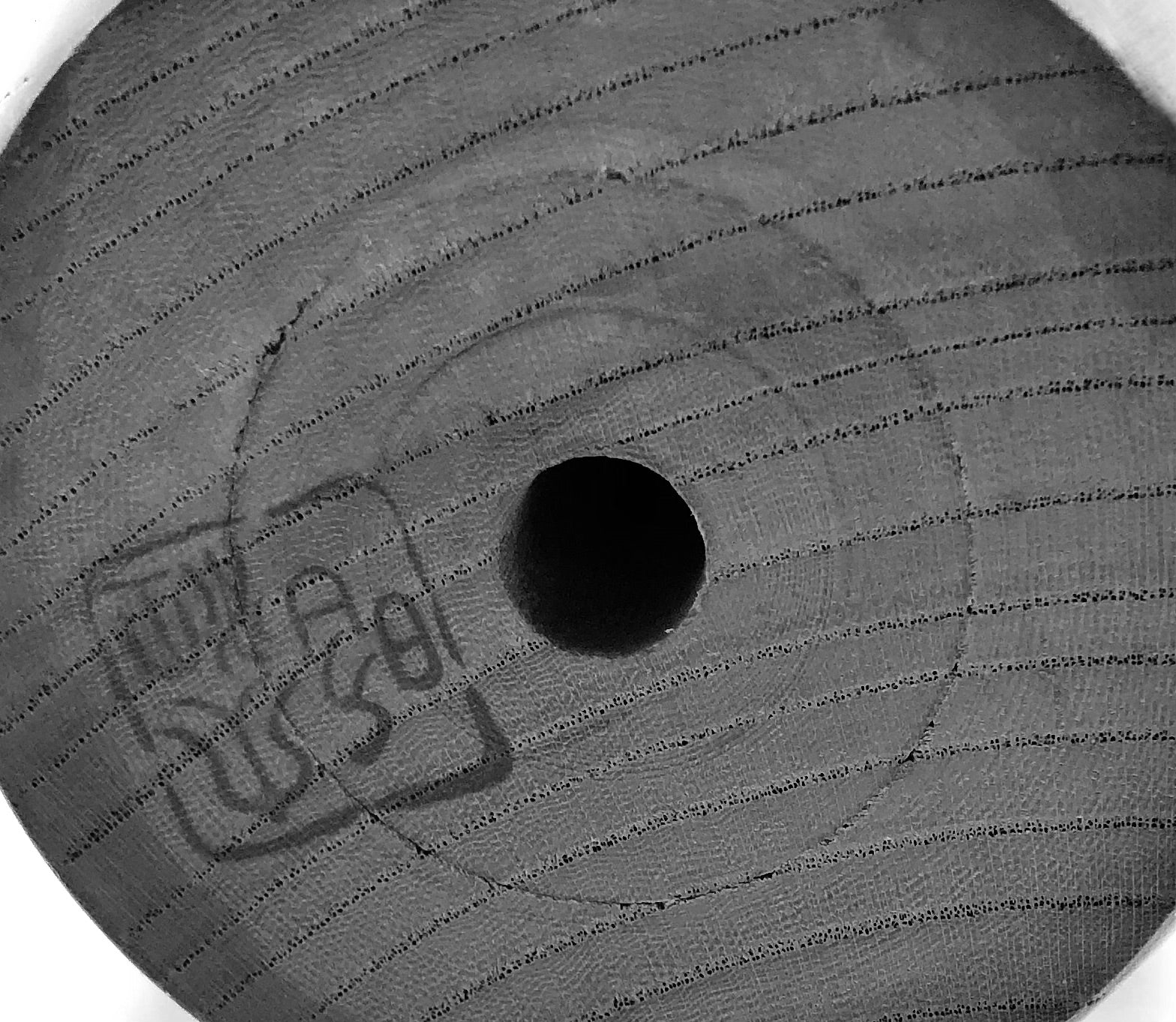


Japanese Interpretation of “Daruma | Bodhidharma” Doll by Oltata, Akira | Zuganji Temple
Dimensions: 4-1/4”h x 3-3/4”dia
The Daruma figure was introduced to Japan in the Edo period (1603-1868), and becoming a popular historical doll and is said to have an unexplainable power to support the owner in challenging any obstacles that are presented, to achieve one’s dreams and goals. This figure was made as a daily reminder of ones intentions and perseverance, and an object that is referred to as Engimono and made for the local population to make their New Years wishes. Believers hope to fulfill their desires, self-discipline, good health, and ending suffering. Additionally wishes for business and financial success were common. These New Year requests and resolutions were purchased at temples where blessing were made by the attending buddhist priests.
Shown is a face of Daruma is the main feature exhibiting his large open white eyes with pupils looking to the heavens, with an expressive and accented red downturned mouth. The artist incorporated his definitive eyebrows and trademark facial hair with and focus on his large nose and wide nostrils. The figure shows a serious attitude with black graphics on the front of his gown, and missing legs and arms, as a reminder of Bodhidharma, (Daruma) losing his limbs in his quest to reach enlightenment through self-sacrifice and meditation. The carver used exact technical perfection by the artists of the period. It is beautifully lathe-turned and made of Oak, (Kashiwa). The bottom of the piece has the artists red impressed stamp.
NOTE: Daruma’s presence in the life and culture of Japan has recorded its diverse manifestations and their symbolic role suggesting the complex interrelatedness of Daruma with Japanese customs. As a distinctive Japanese image, Daruma is a product of multiple sources: history, legend, mystical experience, sectarian rivalry, artistic genius, popular imagination and inventiveness, and aspirations intrinsic to the formation of Japanese culture and the definitions of Japanese character.
Condition: Excellent vintage condition, commensurate with age and retaining the original craft/workmanship and natural features of the wood from which is it made. An Exceptional representation of this notable religious founder of the Zen sect of Buddhism. The piece meets all the standards of Zen Buddhist art.
